Newsletter
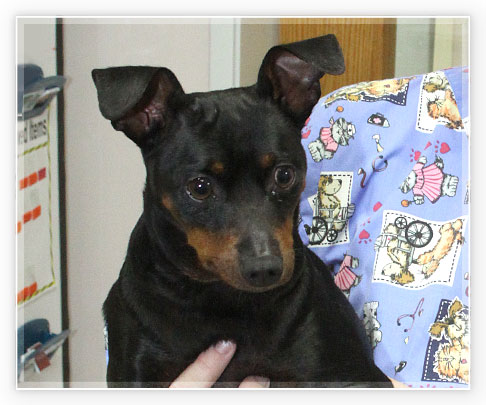 The veterinarians and staff at the Wright City and Warrenton Veterinary Clinics are pleased to provide you with an online newsletter.
This fun and fact-filled newsletter is updated on a regular basis.
The veterinarians and staff at the Wright City and Warrenton Veterinary Clinics are pleased to provide you with an online newsletter.
This fun and fact-filled newsletter is updated on a regular basis.
Included in the newsletter are articles pertaining to pet care, information on our animal hospital, as well as news on the latest trends and discoveries in veterinary medicine.
Please enjoy the newsletter!
Current Newsletter Topics
March 23 is National Puppy Day! Since 2006, National Puppy Day celebrates the magic and unconditional love that puppies bring to our lives. Over the years, this holiday has grown into an international holiday, and has trended on Twitter since 2012.
Creator Colleen Page—who also founded National Dog Day and National Cat Day—created this event to help save orphaned puppies across the globe while educating the public about the horrors of puppy mills. According to the National Puppy Day website, there are approximately 8,000-10,000 puppy mills in the U.S. , including many businesses that call themselves breeders that purposely allow their dog to get pregnant in hopes of selling puppies through local papers or online.

“The tragedy of puppy mills is that they don’t care about the animals more than a commodity to be sold,” National Puppy Day’s website reads. “Most of these animals live in crammed cages with no room to movie, in complete and utter squalor.”
While National Puppy Day is a great day to post pictures of your adorable puppy to your Twitter feed, don’t forget why we celebrate this holiday: for the fair and ethical treatment of dogs across the world. To learn more about National Puppy Day and why adopting a puppy is important, visit http://www.nationalpuppyday.com/
When cats play, they incorporate a variety of behaviors into their play. Aggressive play behavior is particularly common in young cats and in cats that live in one-cat households. Play provides young cats with opportunities to practice skills they would normally need for survival such as pouncing, stalking, biting, scratching and clawing. If humans play with a young kitten using their hands and/or feet instead of toys, the kitten is liable to learn that practicing these skills while playing with people is okay. In most cases, it is possible to teach your kitten or young adult cat that rough play is not acceptable behavior.
Since young cats and kittens need a lot of playtime, it is important to set up three or four consistent times during the day to initiate play with your cat. This helps her understand that she is not the one responsible for initiating play. This also helps to avoid unwanted pouncing at inappropriate or inconvenient times.
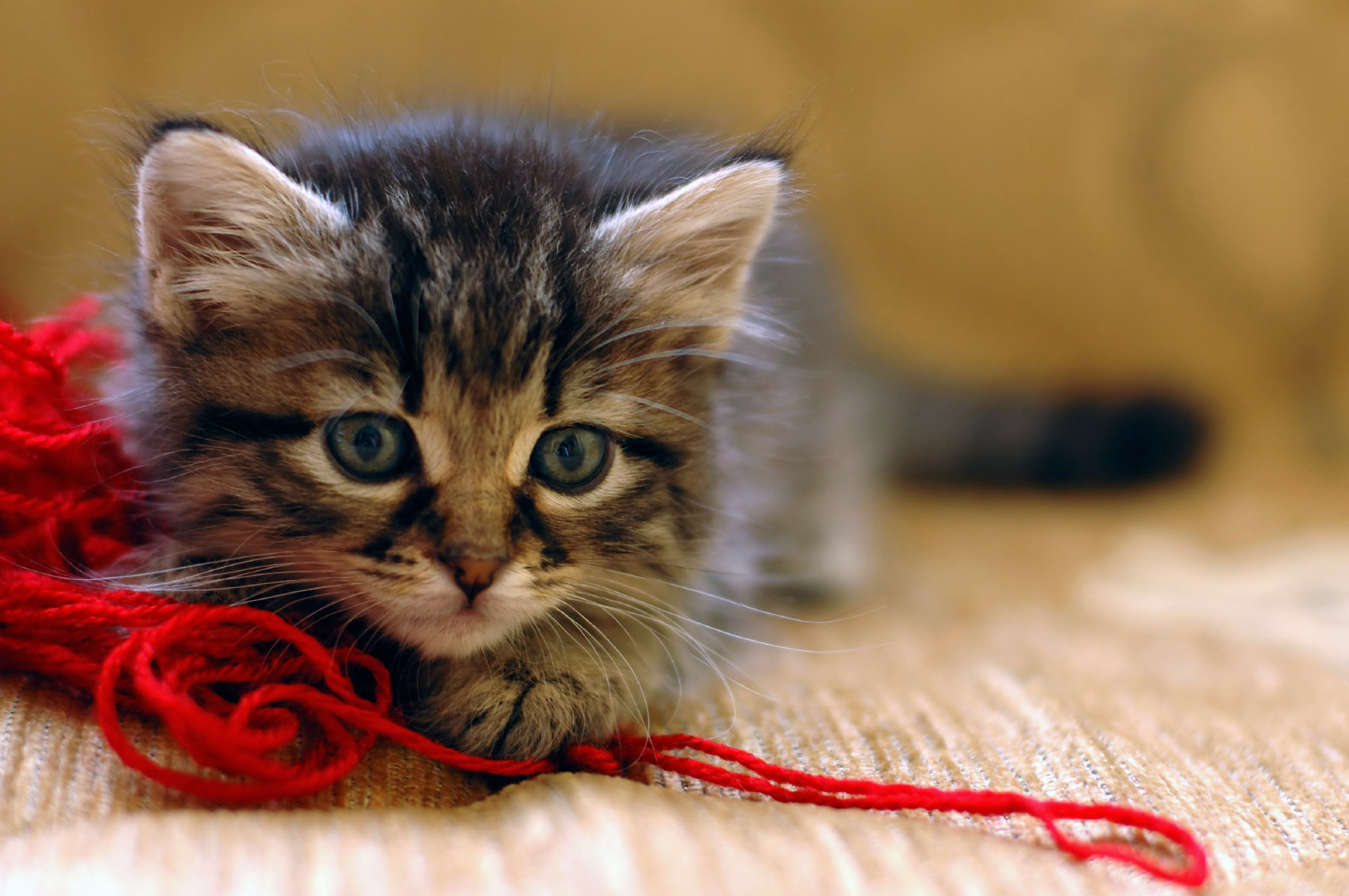
One way kittens play is by grabbing each other with both front feet, biting each other and kicking with their back feet. This is also a way kittens try to play with hands and feet if being waved in front of them. It is very important to avoid using any part of your body, like fingers or toes. Redirect your cat's aggressive play behavior onto acceptable objects like toys. It may take some trial and error to find the toy that works best with your kitten so make sure you try a variety.
Often, discouraging unacceptable behavior is the only avenue that is available. You need to set the rules for your kitten's behavior and your family and friends should reinforce these rules. Your kitten can't be expected to learn to differentiate between people in terms of when it's okay for rough play and when it is not.
• Use aversion techniques to discourage your kitten from nipping or biting- You can either use a squirt bottle filled with water or a can of pressurized air to squirt your kitten when she becomes rough. To use this technique effectively, you always need to have the spray bottle or can of air handy. Remember that aversion techniques only works if you offer your kitten an acceptable alternative.
• Redirect the behavior- After you startle your kitten with the air or water, IMMEDIATELY offer her a toy to wrestle with or to chase. This will encourage her to direct her rough play onto a toy instead of a person. It is recommended that you keep a stash of toys hidden in each room specifically for this purpose.
• Withdraw attention when your kitten starts to play too rough- If the distraction and redirection techniques don't seem to be working, the most drastic thing you can do to discourage your cat from rough play is to withdraw all attention. Since she wants to play with you, she is going to figure out how far she can go; however, you keep this limit consistent. The best way to withdraw your attention is to walk into another room and close the door long enough for her to calm down. If you pick her up to put her in another room, you're rewarding her by touching her. You should be the one to leave the room.
If you find that none of these suggestions work and your kitten's play increases in aggression or becomes unpredictable, it can be best to seek help from a behavior specialist. Kittens can bite or scratch through the skin, and abuse by your cat is not conducive to a caring and mutually beneficial relationship.
It is perfectly normal for our dogs to engage in a little attention-getting behavior from time to time. As long as the behavior stays within acceptable limits, there is nothing particularly wrong with it. Many times your dog will communicate with you by barking at you, indicating a reason to take notice of him. Also, if you are engrossed in conversation, for example, and your dog paws at your leg to solicit your attention, it would not be inappropriate. What you must remember is that your dog quickly learns which behaviors work and which ones do not according to how you respond. That being said, it is necessary to set reasonable boundaries so your dog can learn which behaviors are acceptable to you.
There are a number of ways a dog can look for attention. The most common actions are barking, whining, gagging (or actual vomiting), feigning lameness (limping), jumping and pawing. Keep in mind that some dogs go above and beyond if they think their behavior will be rewarded with attention, so this list may seem fairly tame. It is important to note what your reaction is to certain behaviors in order to determine which one your dog has employed to get your attention. If you ignore your dog when he barks but yell and/or touch him when he jumps, you are more likely encouraging him to jump whereas his barking is a normal communication.
The main principle involved in treating attention-seeking behaviors is to ignore it. It is not a fast-acting solution, but one that generally produces the best results. In fact, the behavior may get worse or even more intense before it eventually fades away. Keep in mind that if you give in intermittently or after a lengthy period of trying to "tough it out" before the behavior has been squelched, you will reinforce the behavior more firmly. Your dog will learn that if he keeps it up, the attention he wants will eventually come his way.
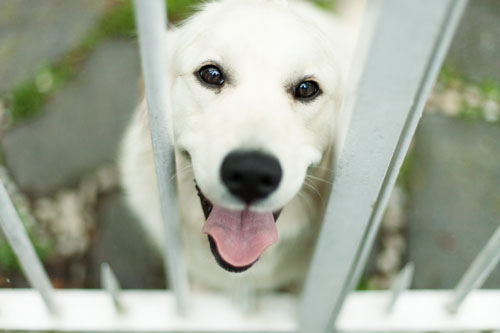
Another way to solve the problem is to use a "bridging stimulus." A bridging stimulus is a neutral sign (or cue) that brings about a particular consequence (i.e. it forms a "bridge" between a behavior and a consequence). It could be a duck call or a tuning fork, or the sound of striking a note on a piano. The noise is sounded at the time the dog is engaging in the unwanted behavior to signal the owner's imminent withdrawal of attention, perhaps even leaving the room. What the bridging stimulus does is to focus the dog's attention on that point in time when attention withdrawal is about to happen. It is not intended to be aversive, but rather a consistent signal. The specific behavior should dissolve more consistently and rapidly if a bridging stimulus is used rather than if attention withdrawal is employed without such a signal.
If your dog is still performing the same behaviors after employing the above mentioned strategies, there could be other factors involved. It is possible that your dog is not receiving any attention or he is spending too much time alone or in a crate. It may be that he is getting insufficient exercise or mental stimulation. Excess energy could also be an issue. It is extremely important to address these issues than just trying to stop the dog from bothering you. It could be that your expectations are not conducive to normal dog behavior and care. Some questions you may ask yourself include:
• Does my dog get enough exercise? The minimum is 20-30 minutes of aerobic exercise daily.
• Is my dog eating a sensible diet?
• Is my level of communication with my dog adequate? Have I trained my dog? You should be striving for 85 percent responsiveness to a one word command such as sit, down, come, watch, etc.
• Is my dog being rewarded with my attention (petting, praise, etc.) when he is doing something I like? If not, begin indicating my approval of desired behaviors.
• Does my dog have a "job?" For certain breeds having a job or something to focus attention regularly helps curb unwanted behavior. Retrieving the paper every day or accessing his food is an example.
The bottom line is that dogs need attention. What you give your attention to (whether good or bad) generally teaches the dog how to achieve that attention through certain behaviors. As an owner, it is your responsibility to let your dog know which behaviors are acceptable and which ones are not. Any behavior can be reinforced. It is up to you to decide what kind of relationship you want with your dog.
There is almost nothing more comforting than when a cat jumps on our lap and begins to purr. Ever since the Egyptians started worshiping the cat, philosophers, scientists and cat lovers worldwide have wondered why cats purr. When we hear and feel this purring, we assume that everything is just fine with the cat. But why do cats purr? And what produces this sound?
Purring is still somewhat of a mystery; however, most experts agree that it's due to the vibration of the vocal cords when the animal inhales and exhales.
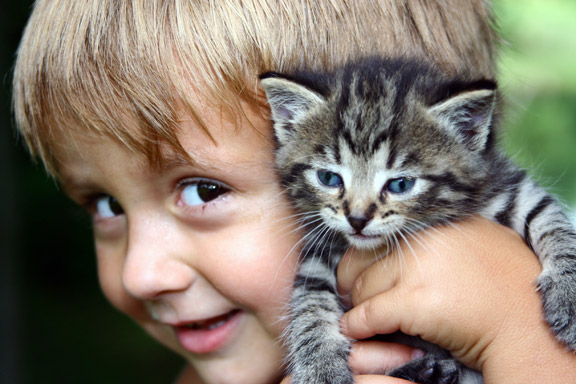
It appears as though purring is not just limited to domestic cats. Some wild cats, such as pumas and mountain lions are able to purr. In general, most large cats that cannot roar are able to purr. The calls of the leopard vary and include a series of harsh coughs, throaty growls and deep, purring sounds.
It turns out that cats have special wiring traveling from the brain to the muscles in the vocal cords. Nerve signals that pass through this wiring system cause vibrations of the vocal cords. While the nerves cause the vocal cords to vibrate, the air forced through them by the diaphragm causes the musical hum. Since breathing has both inspiratory and expiratory phases, cats purr continuously.
It is commonly believed that cats purr when content. However, cats also purr when they are severely injured, frightened or giving birth. According to some veterinarians, the original function of the purr was to enable a kitten to communicate with his mother that things are going well. A kitten is able to purr by the second day of life, and although he can't meow and nurse at the same time, he can purr and nurse.
As the cat matures, the meaning of the purr changes. Some cats purr to indicate contentment or pleasure, but badly frightened cats and severely ill cats also purr. It is not uncommon for cats to purr when they are close to death. This final purring may indicate a state of anxiety or possibly euphoria. These states have also been elucidated in terminally ill people.
Since the purr has lasted through hundreds of generations of cats, there must be a survival mechanism behind its continued existence. Researchers believe that self-healing is the survival mechanism behind the purr. There is extensive documentation that suggests that low frequencies, at low intensity, are therapeutic. These frequencies can aid bone growth, fracture healing, pain relief, tendon and muscle strength and repair, joint mobility, the reduction of swelling and the relief of dyspnea or breathlessness. Purring may be linked to the strengthening and repairing of bones, relief of pain and wound healing.
Animal behaviorists believe that when cats purr under stressful circumstances, they are reassuring or comforting themselves, much as humans may sing to themselves or hum when they are nervous. Frightened cats may purr to communicate submissiveness or non-aggressive intentions. A feral cat may purr to signal that he is not planning to attack and other cats need not feel threatened. Older cats may purr when they play or approach other cats, signaling that they are friendly and want to come closer.
Congratulations! You've just taken the first step toward providing the best care for your friend in its golden years. Through senior blood testing, not only can normal laboratory values be determined that are specific to your pet, but any abnormal values may be addressed in order to maintain a high quality of life for your pet as it ages.
It is recommended to have these tests performed every one to two years to monitor any changes that may occur. It is only through early detection that many age-related illnesses may be slowed or prevented. Depending on the results, more frequent testing may be recommended.
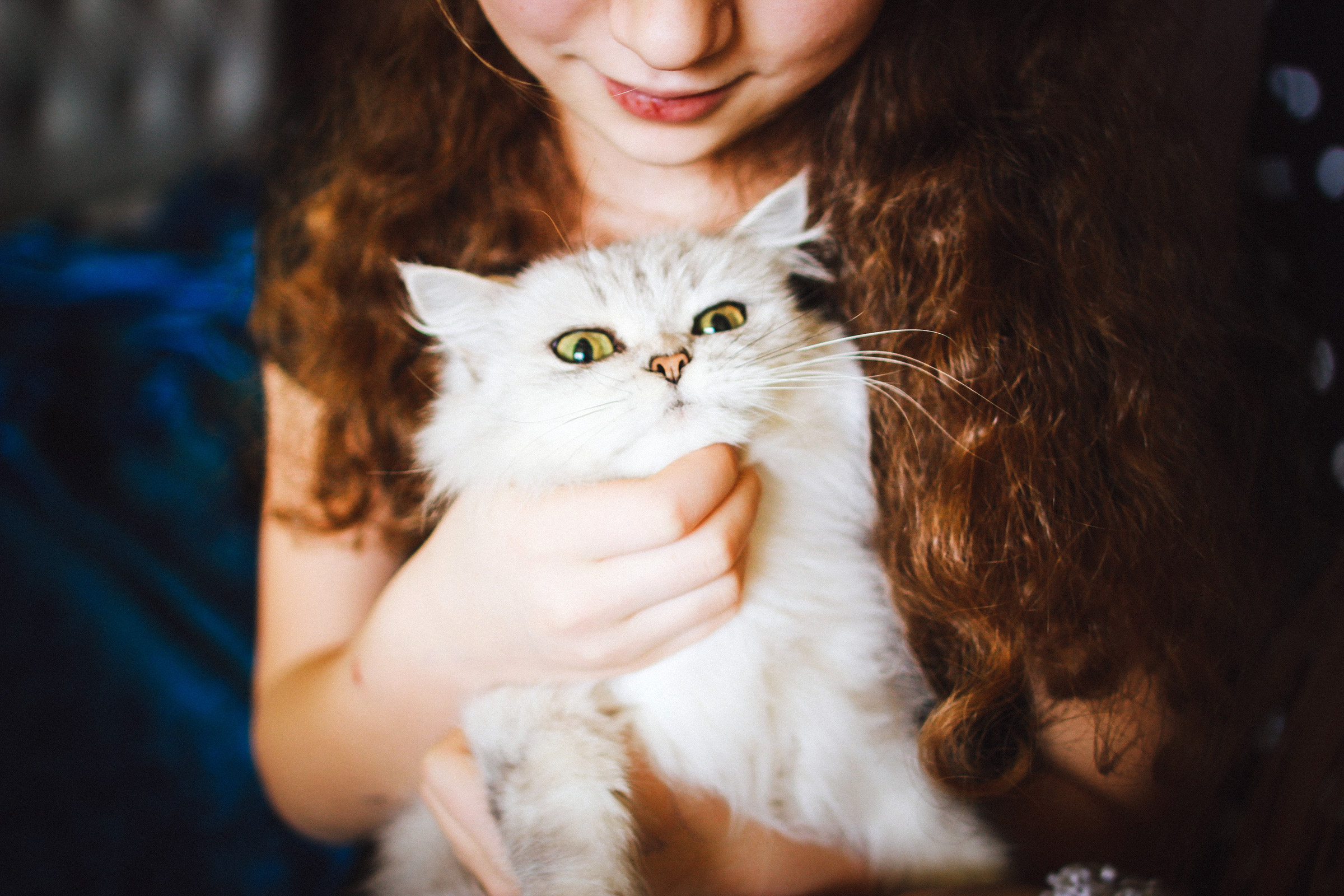
The aging process brings about a gradual reduction in your pet's physical capabilities. While dogs and cats begin to undergo these changes starting at about age 5 to 7 years, different pets will show the various signs of growing old at different rates. The best time to recognize your pet's "senior" status and need for extra TLC is long before advanced disabilities set in.
To increase the length and quality of your pet's life, it is important to begin a process of prevention. Risks are associated with your pet's background, environment or lifestyle. Certain conditions put him or her at greater risk of developing age-related changes or diseases. Some of these factors cannot be controlled; however, activity level, living conditions, quality of medical care and level of nutrition are factors that can be controlled by a responsible owner. The extent to which these factors are managed help determine the quality and length of your pet's life. By identifying some of your pet's risk factors, treatment can be initiated prior to the onset of a medical problem.
Dental Disease
Tooth loss and serious gum infections become more common as pets age. The loss of teeth is a problem, and difficulty in chewing food may result. However, the spread of bacteria from the mouth into the pet's bloodstream, when infections occur around the teeth, is an even more serious risk to the older pet's health. Tumors of the mouth and gums also become more likely with advancing age. The first step in good dental care is to have your pet's teeth examined by your veterinarian.
Weight Gain
Obesity is one of the single most important risks the older pet's health. Since the older animal's metabolism and activity level slows down, most older pets have a tendency to gain weight. Obesity is unhealthy in any pet, but it is especially harmful to an older animal's joints, heart and other organs.
Skin Conditions
Skin problems may occur more frequently since the older pet's skin is less elastic and repairs itself less rapidly. Hair loss is usually more pronounced because hair follicles are less active in later life.
Cold and Warm Temperatures
Because your pet's metabolism is slowing, you may notice an increasing intolerance to heat and cold. This happens because your pet produces less of the hormones that are critical for maintaining the body's normal temperature.
Senses
Smell, sight, taste and hearing will diminish as your pet ages. Many pets adapt to these losses very well, although there may be a decrease in appetite. For such pets, a highly nutritious, well balanced diet is a must. Eye problems, such as glaucoma and cataracts, are more likely to develop in older pets.
Internal Organs
Diseases of vital internal organs — heart, lungs, kidneys and bladder — occur more frequently in older dogs and cats. As animals age, the organs also age. Therefore, a complete health assessment of the senior dog and cat includes considerable attention to these organs along with dietary recommendations to promote good health.

What you can do at home:
- Avoid excessive weight gain. Your veterinarian may recommend an exercise program as well as a special senior pet food.
- Keep your pet's living and areas clean, dry and warm at all times.
- If possible, regularly check your pet's mouth for reddened gums, loose teeth or unusual swellings. Check eyes for redness, unusual cloudiness, discomfort and discharge. Check ears for wax build-up, discharge or unusual odors.
- Thoroughly groom and inspect your older pet's skin regularly. Look for lumps, bumps and wounds.
- If your older pet's eyesight is impaired, avoid relocating furniture. Also, try not to drastically change your pet's daily routine.
- Any change associated with eating, drinking or elimination should be noted and discusses with your veterinarian. These are conditions are often associated with early stages of disease.
- Take your older pet for regular senior checkups, even if he or she seems to be well. It is always easier and less expensive to prevent a problem rather than treat a problem.
- Feed only the food your veterinarian recommends. Since many "treats" are high in sodium, you should not permit your older pet to eat them unless recommended.
Your older pet is a real member of the family. With proper care and regular testing, your loyal companion should be able to live a long and healthy life.